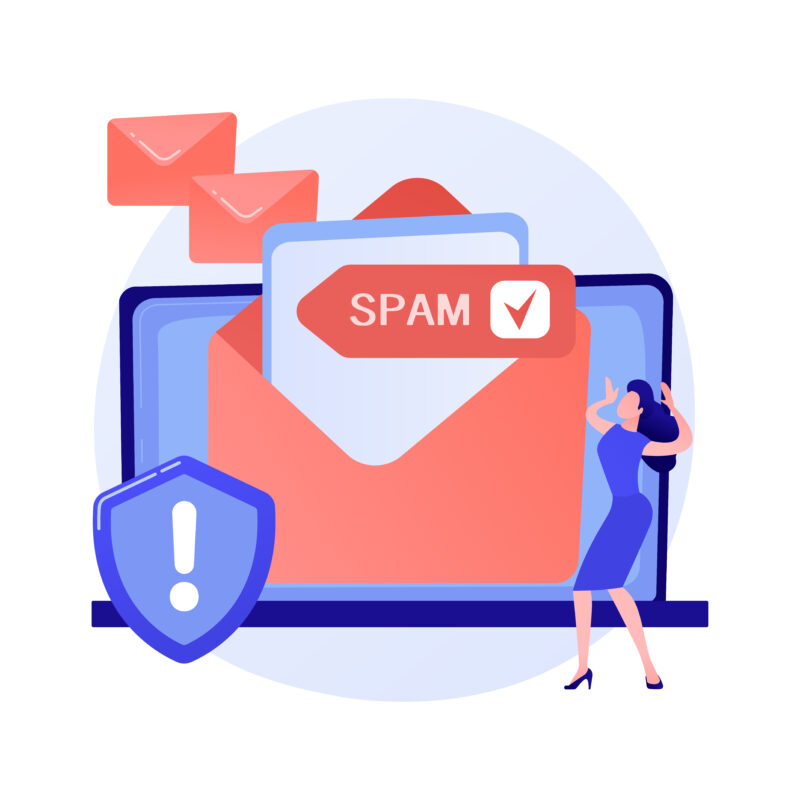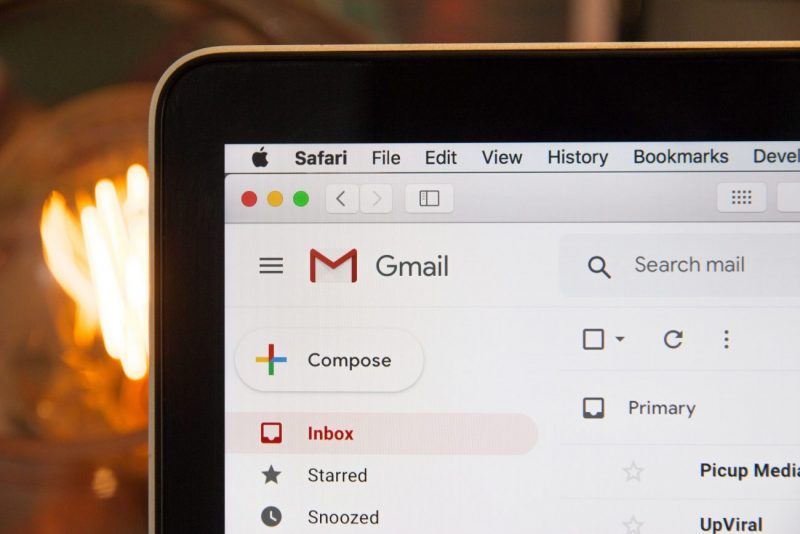In this article, among other things, we will explore how to steer clear of the spam folder. If your company invests a significant amount of time in creating outbound campaigns or sending emails, spam traps can be your worst enemy. Despite this, they can also be helpful as they filter out scams and impersonation emails.
What Are Spam Traps?
Spam traps, also known as trap spam, are a user’s security tool. Their primary goal is to protect against malicious or dangerous information. By using a designated email, users can avoid unwanted content from other users. Adding this email address to your contact list allows you to sidestep malicious content.
Behind this email address, there is no actual person, and two-way communication is not possible. It merely involves having it in the contact list to gain protection from such content. These traps take the form of honeypots, directing all such content to the spam folder, acting as a firewall against users with malicious intentions. However, this poses a downside for businesses, as having the company’s email in this folder can harm the established domain and affect deliverability rates.
Once an email ends up in spam traps, it is adversely affected. Spam review institutions will mark it as a spammer.
Types of Spam Traps
Among the types of traps, some are more dangerous than others. Let’s delve into the types of junk mail you might encounter:
- Pure Spam Traps: Also known as pristine or honeypot traps, these are new email accounts designed to track spam. They are created by internet service providers. As they have no history, they can generate reports on new spam, and companies may fall into these traps if they use unverified lists or bots to obtain email addresses.
- Spam Traps with Recycled Domains: Owners of spam traps can activate a domain of an unused company or individual. This way, they can see who sends emails to an address that no longer exists and detect spammers to include them in the blacklist.
- Spam Traps with Recycled Addresses: Similar to the previous type, if a person subscribes to content like a daily newsletter and does not access the email for a long time, that email address will be classified as spam. This happens because there has been no interaction with that content for a certain period. It’s crucial for companies to regularly review their contact lists, identifying disinterested users, those who have unsubscribed, or those who have not responded.
- Spam Traps with Invalid Emails: This trap relies on typographical errors. Care must be taken when sending emails to incorrect addresses because although it can happen occasionally, if it becomes a continuous practice, you may be labeled as a spammer.
As you can see, there are many types of spam traps, and you need to be mindful of them when sending out your email campaigns, newsletters, or any content via email.
How to Identify Them?
When we send out an email campaign, we cannot know if our emails have fallen into a spam trap. We won’t receive any notifications or alerts. To find out if our message has been caught by a trap, we must look at various metrics, including:
- Lower open rate
- Lower response than usual
- Higher bounce rate
If our company is experiencing any of these factors, we must review our contact list to check for any incorrect emails or deactivated ones.
Why Emails End Up in Spam?
Mailbox providers do not have a single filter to identify unwanted emails. Each domain will use a selection in its company, but they do have similar characteristics to identify spam emails. Some factors taken into account include:
- Authorized domain entry
- Presence on a blacklist
- Suspicious links
- Engagement rate
- Email copy
Spam filters analyze headers, algorithms, whitelists, blacklists, or keyword matching, among other elements. They analyze these components to label the email as spam or not. Errors may occur in this analysis, leading to what we know as false positives or negatives. Therefore, it is essential to know how to avoid falling into this abyss of mailing campaigns.

How to avoid falling into spam?
If you want to dodge the spam folder you should consider the following elements:
- Technical configuration
One of the main reasons why our email may spam is the technical configuration of the SPF (Sender Policy Framework) and the DNS (Domain Name System).
Both elements must be configured because otherwise it will not be recognized and the mail will be sent to spam, that is, the SPF is structured to recognize the IP address of the domains that send the email, in this way the SPF queries the DNS, in which standard IP addresses are registered, and detects hackers trying to send mail from other IPs.
Another way is to configure the DKIM (Domains Keys Identified Mail), consists of creating a unique private key that can be decrypted by the user who receives the mail, it is a technique a little complicated but that guarantees the security of your emails.
- Shipment continued in time
If you send an avalanche of emails to different contacts, the spam filter will believe that it is malicious mail, this tactic has been one of the most used by spammers.
Therefore, we recommend you customize your mails with the name of the recipient or even make 2 different mails depending on the end user, thanks to this your mail will not go to the trash but will be received in the inbox.
- Avoid words marked as spam
There are a number of words that directly relate to spammer emails, we must avoid using this term to not fall into the hands of filters. Here are some of the words you should avoid: promotion, free, offers, sales, website visits, percentages or numbers, congratulations, guaranteed, buy…
- Check the contact list.
It is very important to check the contact list to which we will send the mail, if among them we have many inactive users, the spam filter block
- Check the contact list.
It is very important to check the contact list to which we are going to send the mail, if among them we have many inactive users, the spam filter will block our mail. It is therefore essential to remove such contacts from our final list.
- Sending emails only to active contacts
As we have said if we send the mail to inactive contacts our mail will fall into the hands of the spam filter, this is one of the typical techniques of spammers and for that reason we must be careful with such methods.
Business reputation and its relationship with spam
Reducing spam filters aims to improve your company’s reputation, so it’s important to have these features provided by email providers.
- Volume: do not exceed a limit between 200 and 300 emails daily.
- Consistency: Constant sending of emails. It is not advisable to make a boom of shipments on the same day.
- Maintain a good ratio: from sent email to received email.
- Delivery capacity reinforcement: configure the email preparation function.
- Fast shipping: send emails throughout the day to make it effective.
- Monitoring the following metrics: Open rate, response, bounce and cancellation.
The case of gmail
In recent years we are getting a lot of spam in our emails, this makes us think that Gmail spam filters are not working well. Phishing campaigns or scams with our orders are the most received star emails these days.
How to do it? Easy. They imitate a basic email of all companies: unsuscribe button, social networks, body of text in English with a structure of HTML and an image in which it is clicked and redirected to the page where personal data is requested.
This type of scam is increasingly common since they have a code that simulates encrypted files This type of scam is increasingly common since they have a code that simulates encrypted files and so, passes all spam filters that are active on the Gmail platform.
Spain, the country with the most spam in the world?
The truth is that our country is in the top 10 countries with the most spam in the world, the pandemic has triggered the digitization of many sectors, but also assumed the increase in such shipments.
This means that by working at home institutional emails have reproduced more quickly and have overcome spam, but, no, it has not diminished as you are thinking. In fact, it has remained at the same figures as last 2019.
Our country originates almost 3% of spam worldwide, whereas we receive almost 10% of this being one of the favorite destinations for this type of malicious information.
Spam study
Some trends are that institutional emails have increased due to telework and unwanted emails are still in line, in Spain this second quarter experienced a boom of these from April to June, In contrast, in summer there was a marked decline in July, with stable maintenance in August and September.
Spain is among the countries that emit the least spam with only 3%, but it does receive almost 10%. At the top of the list we have Russia with almost 25%; followed by Germany (14.19%) and China in third place (10.31%).
As we can see from the map made by Kapersky in his quarterly study, Russia is the country where the origin of spam is most experienced worldwide.
As we see the consumer is fed up with receiving emails that want to trick him or bombard him with useless information, therefore, from companies we must be careful with the way in which we send mail, the repetition of content and above all, the dissemination of useless information.
We recommend following the steps above if you don’t want your emails to end up in your consumers’ spam folder. In addition, if you can create useful, entertaining and adaptable content for your consumer, you will have an element of value to attract consumers.
Invest in your marketing department to create valuable content, teamwork will increase the likelihood of creating useful information that is not tagged as junk at the time of sending.





